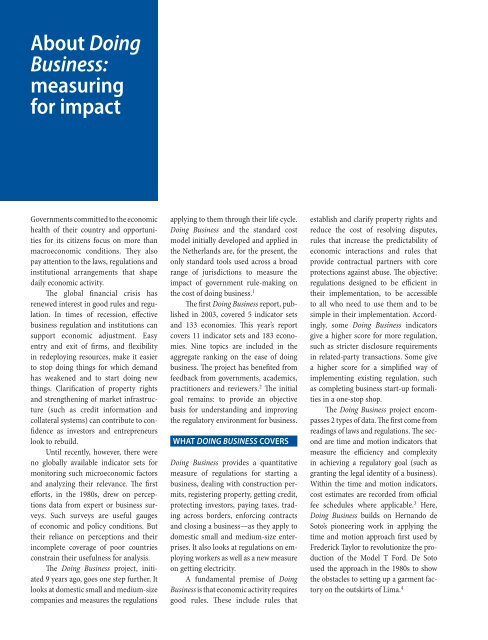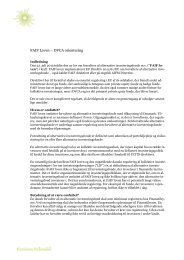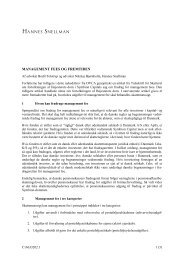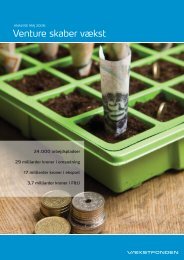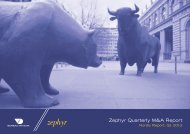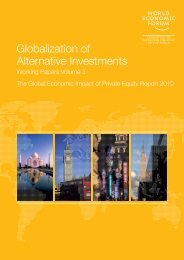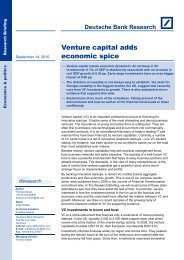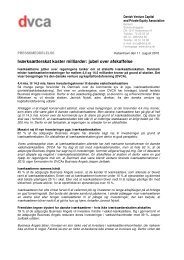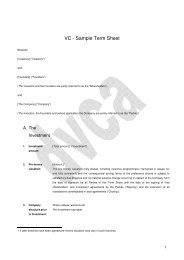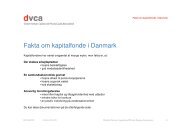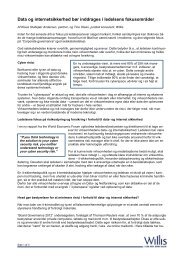A copublication of The World Bank and the - DVCA
A copublication of The World Bank and the - DVCA
A copublication of The World Bank and the - DVCA
Create successful ePaper yourself
Turn your PDF publications into a flip-book with our unique Google optimized e-Paper software.
12 DOING BUSINESS 2011<br />
About Doing<br />
Business:<br />
measuring<br />
for impact<br />
Governments committed to <strong>the</strong> economic<br />
health <strong>of</strong> <strong>the</strong>ir country <strong>and</strong> opportunities<br />
for its citizens focus on more than<br />
macro economic conditions. <strong>The</strong>y also<br />
pay attention to <strong>the</strong> laws, regulations <strong>and</strong><br />
institutional arrangements that shape<br />
daily economic activity.<br />
<strong>The</strong> global financial crisis has<br />
renewed interest in good rules <strong>and</strong> regulation.<br />
In times <strong>of</strong> recession, effective<br />
business regulation <strong>and</strong> institutions can<br />
support economic adjustment. Easy<br />
entry <strong>and</strong> exit <strong>of</strong> firms, <strong>and</strong> flexibility<br />
in redeploying resources, make it easier<br />
to stop doing things for which dem<strong>and</strong><br />
has weakened <strong>and</strong> to start doing new<br />
things. Clarification <strong>of</strong> property rights<br />
<strong>and</strong> streng<strong>the</strong>ning <strong>of</strong> market infrastructure<br />
(such as credit information <strong>and</strong><br />
collateral systems) can contribute to confidence<br />
as investors <strong>and</strong> entrepreneurs<br />
look to rebuild.<br />
Until recently, however, <strong>the</strong>re were<br />
no globally available indicator sets for<br />
monitoring such microeconomic factors<br />
<strong>and</strong> analyzing <strong>the</strong>ir relevance. <strong>The</strong> first<br />
efforts, in <strong>the</strong> 1980s, drew on perceptions<br />
data from expert or business surveys.<br />
Such surveys are useful gauges<br />
<strong>of</strong> economic <strong>and</strong> policy conditions. But<br />
<strong>the</strong>ir reliance on perceptions <strong>and</strong> <strong>the</strong>ir<br />
incomplete coverage <strong>of</strong> poor countries<br />
constrain <strong>the</strong>ir usefulness for analysis.<br />
<strong>The</strong> Doing Business project, initiated<br />
9 years ago, goes one step fur<strong>the</strong>r. It<br />
looks at domestic small <strong>and</strong> medium-size<br />
companies <strong>and</strong> measures <strong>the</strong> regulations<br />
applying to <strong>the</strong>m through <strong>the</strong>ir life cycle.<br />
Doing Business <strong>and</strong> <strong>the</strong> st<strong>and</strong>ard cost<br />
model initially developed <strong>and</strong> applied in<br />
<strong>the</strong> Ne<strong>the</strong>rl<strong>and</strong>s are, for <strong>the</strong> present, <strong>the</strong><br />
only st<strong>and</strong>ard tools used across a broad<br />
range <strong>of</strong> jurisdictions to measure <strong>the</strong><br />
impact <strong>of</strong> government rule-making on<br />
<strong>the</strong> cost <strong>of</strong> doing business. 1<br />
<strong>The</strong> first Doing Business report, published<br />
in 2003, covered 5 indicator sets<br />
<strong>and</strong> 133 economies. This year’s report<br />
covers 11 indicator sets <strong>and</strong> 183 economies.<br />
Nine topics are included in <strong>the</strong><br />
aggregate ranking on <strong>the</strong> ease <strong>of</strong> doing<br />
business. <strong>The</strong> project has benefited from<br />
feedback from governments, academics,<br />
practitioners <strong>and</strong> reviewers. 2 <strong>The</strong> initial<br />
goal remains: to provide an objective<br />
basis for underst<strong>and</strong>ing <strong>and</strong> improving<br />
<strong>the</strong> regulatory environment for business.<br />
WHAT DOING BUSINESS COVERS<br />
Doing Business provides a quantitative<br />
measure <strong>of</strong> regulations for starting a<br />
business, dealing with construction permits,<br />
registering property, getting credit,<br />
protecting investors, paying taxes, trading<br />
across borders, enforcing contracts<br />
<strong>and</strong> closing a business—as <strong>the</strong>y apply to<br />
domestic small <strong>and</strong> medium-size enterprises.<br />
It also looks at regulations on employing<br />
workers as well as a new measure<br />
on getting electricity.<br />
A fundamental premise <strong>of</strong> Doing<br />
Business is that economic activity requires<br />
good rules. <strong>The</strong>se include rules that<br />
establish <strong>and</strong> clarify property rights <strong>and</strong><br />
reduce <strong>the</strong> cost <strong>of</strong> resolving disputes,<br />
rules that increase <strong>the</strong> predictability <strong>of</strong><br />
economic interactions <strong>and</strong> rules that<br />
provide contractual partners with core<br />
protections against abuse. <strong>The</strong> objective:<br />
regulations designed to be efficient in<br />
<strong>the</strong>ir implementation, to be accessible<br />
to all who need to use <strong>the</strong>m <strong>and</strong> to be<br />
simple in <strong>the</strong>ir implementation. Accordingly,<br />
some Doing Business indicators<br />
give a higher score for more regulation,<br />
such as stricter disclosure requirements<br />
in related-party transactions. Some give<br />
a higher score for a simplified way <strong>of</strong><br />
implementing existing regulation, such<br />
as completing business start-up formalities<br />
in a one-stop shop.<br />
<strong>The</strong> Doing Business project encompasses<br />
2 types <strong>of</strong> data. <strong>The</strong> first come from<br />
readings <strong>of</strong> laws <strong>and</strong> regulations. <strong>The</strong> second<br />
are time <strong>and</strong> motion indicators that<br />
measure <strong>the</strong> efficiency <strong>and</strong> complexity<br />
in achieving a regulatory goal (such as<br />
granting <strong>the</strong> legal identity <strong>of</strong> a business).<br />
Within <strong>the</strong> time <strong>and</strong> motion indicators,<br />
cost estimates are recorded from <strong>of</strong>ficial<br />
fee schedules where applicable. 3 Here,<br />
Doing Business builds on Hern<strong>and</strong>o de<br />
Soto’s pioneering work in applying <strong>the</strong><br />
time <strong>and</strong> motion approach first used by<br />
Frederick Taylor to revolutionize <strong>the</strong> production<br />
<strong>of</strong> <strong>the</strong> Model T Ford. De Soto<br />
used <strong>the</strong> approach in <strong>the</strong> 1980s to show<br />
<strong>the</strong> obstacles to setting up a garment factory<br />
on <strong>the</strong> outskirts <strong>of</strong> Lima. 4


